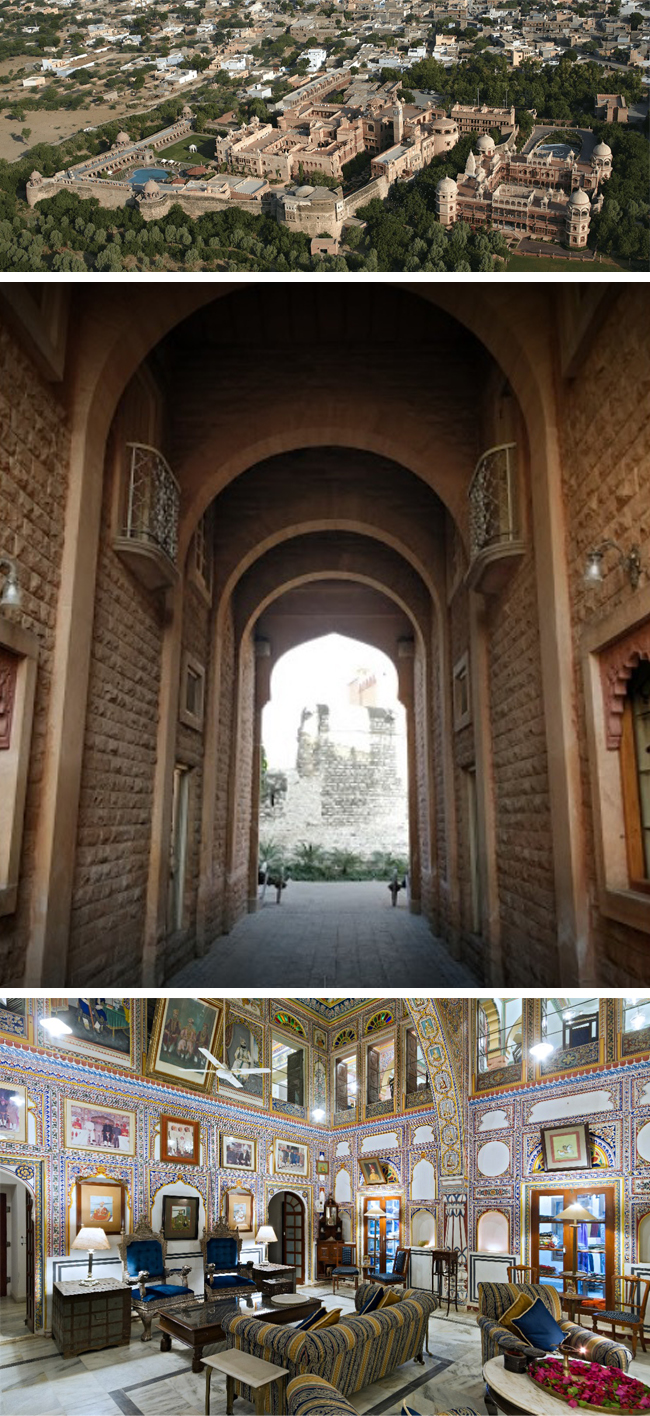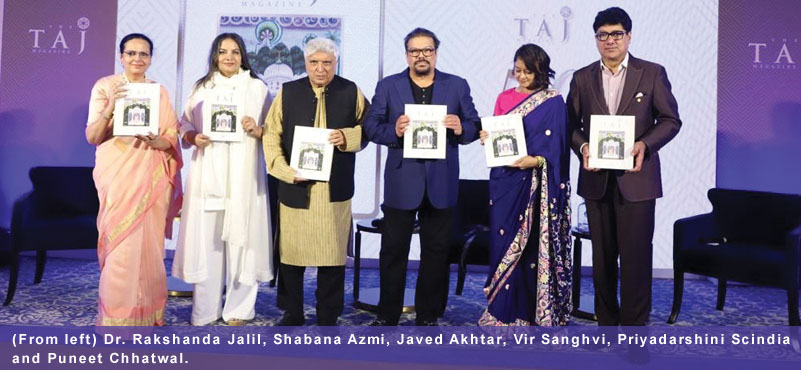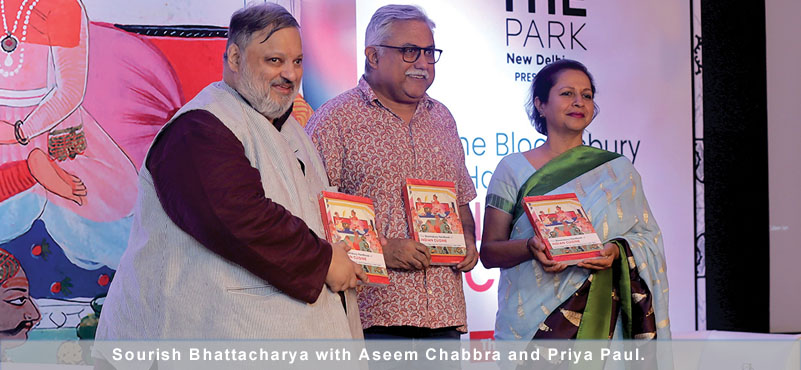Rakesh Mathur, eminent hotelier and presently, president of the Responsible Tourism Society, shares a model concept on how the heritage part of hotel properties can be treated differently to make them eligible for CSR funds. This would help make the entire property more financially viable and sustainable.
My journey into the World of Heritage Hotels started in 2001/2002 after 9/11. The Global Company I headed closed its doors, presumably temporarily, and I found myself walking through a “Haathi Darwaza”, which literally translates to “An Entrance door made for those riding an Elephant!!”
Imagine the size of the door! The solid teak wood that went into its making. The hinges that supported it and enabled it to swing open and shut. The protection it provided to those living and working within. The iron studs that menacingly projected out to intimidate any intruder! The solid 6 feet thick wall that supported it!
But this was not all. It protected a “live-in” Fort. And to reach the 12 feet door I had to cross a Draw- Bridge, made of solid teak, over a moat surrounding the circumference of the huge fort, more than a mile in diameter. That this Moat had no water, and was overgrown with shrubs, home to pests, insects and some smaller wildlife, is part of the story. The drawbridge mechanism was rusted and needed repair to be able to display its magnificence!!

The huge walls of the Fort, made of 6 feet by 4 feet solid stone slabs, was intimidating, to say the least. On top I could see the cannon holes and watch towers.
As I stepped through the “Haathi Darwaza” an overwhelmingly beautiful sight greeted me. The intimidation of the fort walls gave way to the exquisite beauty of human creation. The inner walls of the “Darwaza” were adorned with beautifully designed frescoes and paintings, made of vegetable colours, maybe centuries ago. Some depicting a story of a celebration. Maybe a wedding. Or a coronation. Or simply paying obeisance to the Gods and Deities of the Ruling dynasty. But the colours were slowly fading now. Victims of pollution caused by us Humans.
The Central Courtyard had exquisitely carved stone pillars, and a beautiful fountain with small statuettes and figurines in stone and marble, of Gods, Deities, Fairies and even Ancestors. I could see some pillars tilting, some statuettes broken or disfigured. Victims of the passing of time!!!
The Reception lounge was located in what was earlier the “Diwan-E-Khas” ( Special Sitting Room ) as I was told by the current owner and the Royal descendant of the then Ruling family. Beautifully carved grills, colourful frescoes and paintings on walls. Grand and ornate solid teak furniture, but now with the weather beaten wood cracking in some places. Similar work adorned the “Diwan-E-Aam” ( Public meeting room), now used as a Dining room.
Guest rooms, only 28 in number, were well appointed with all conveniences that a guest would want. They too had exquisitely carved stone windows. Water nozzles in bathrooms were carved in stone in the shape of miniature lion-heads.
The crowning glory was a walk all around on top of the 6 feet wide fort wall. On the watchtowers and along the few cannons that still stood guarding like sentinels beyond the passage of time. The concrete cladding on the almost mile long fort wall was like maintaining a small road in itself.
My mind was abuzz with thoughts of all those highly skilled painters, artisans, stone carvers who must have worked day and night to produce such wonderful works of Art. A depleting race! And I wondered at the cost of all the stone and marble that went into it. Would it be possible to replicate it now? And at what cost? Would it make a 28 room Hotel viable if made now?
And then my mind went to the Moat, that needed water, the Drawbridge that needs to be repaired, the frescos, paintings, statuettes, pillars, carvings, that need restoration and repair. The Fort walkway that needs constant repair. This is the Real Heritage. This is the Real Experience. If not maintained, this precious Heritage would be lost.
But is it viable? Is it on an even keel with normal hotels that we design, build and operate?
The simple answer is NO. Heritage needs Repair, Restoration, Conversion and then only can it function for they were not designed as hotels. And the element of “Heritage” that needs constant repair and restoration, is devoid in regular Hotels
So, if Heritage Hotels are to sustain, we need to THINK DIFFERENTLY and DIFFERENTIATE between:
a) The HOTEL and Hotel Facilities SECTION of a Heritage Property,
b) The several FEATURES and ELEMENTS of Heritage buildings ( Palaces, Forts, Havelis etc ) which, though not essential to the Hotel part, are absolutely INTEGRAL TO THE EXPERIENCE and HERITAGE VALUE OF THE BUILDING AND IT’S HISTORICAL PAST, ie, Moats, Drawbridges, Fort walls and Ramparts sometimes 6 to 8 feet wide, Huge Elephant Doors, Cannons and other such equipment, Wall Paintings, Embedded or Loose Stone Sculptures, Frescoes in original colours, Fountains, Statuettes, Certified Trophies etc.
These Assets and Features are very DIFFICULT AND EXPENSIVE TO MAINTAIN requiring high skill and expertise
Whereas Regular Hotels have Financial Support Packages to address issues related to Loans and Interest Moratorium, Taxation, Subsidies, Skill development, Various Fees and Charges, Employees benefits, based on Rooms and Facilities and Investment etc., these incentives cannot suffice for such Heritage properties where room counts are low but EXPERIENTIAL HERITAGE ELEMENTS are high. These ASSETS and FEATURES which, though not integral to the Hotel, impose a huge financial burden on the Hotel making them non-viable.
I do believe that Restoration, Repair, and Maintenance of these HERITAGE ELEMENTS be RECOGNISED as a CSR Activity. This will then allow owners of such Heritage Properties to tie up with INTERESTED CORPORATES to maintain them, if they so desire. This will thus be a great relief to the Owners and also enhance the Image of supporting Corporates, thereby making it a WIN-WIN for both without any extra cost or loss to anyone
This CSR Activity utilisation of funds can be monitored by empowering an independent agency to monitor and certify
I do hope, this small Recognition in the Heritage Segment will go a long way in Perpetuating our Built Heritage.
 The huge walls of the Fort, made of 6 feet by 4 feet solid stone slabs, was intimidating, to say the least. On top I could see the cannon holes and watch towers.
The huge walls of the Fort, made of 6 feet by 4 feet solid stone slabs, was intimidating, to say the least. On top I could see the cannon holes and watch towers.
 The huge walls of the Fort, made of 6 feet by 4 feet solid stone slabs, was intimidating, to say the least. On top I could see the cannon holes and watch towers.
The huge walls of the Fort, made of 6 feet by 4 feet solid stone slabs, was intimidating, to say the least. On top I could see the cannon holes and watch towers.


































